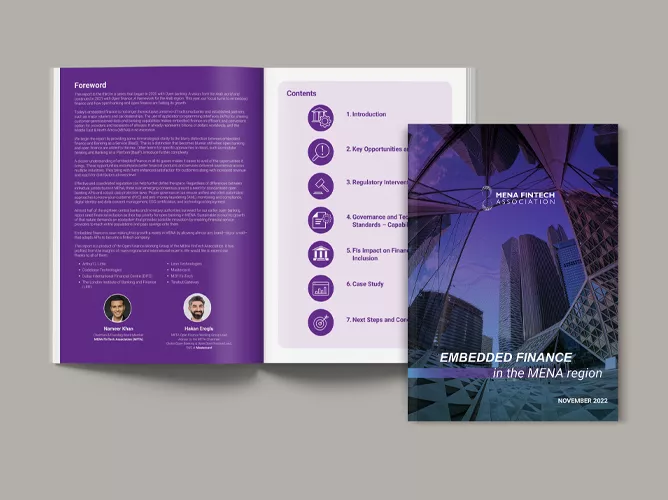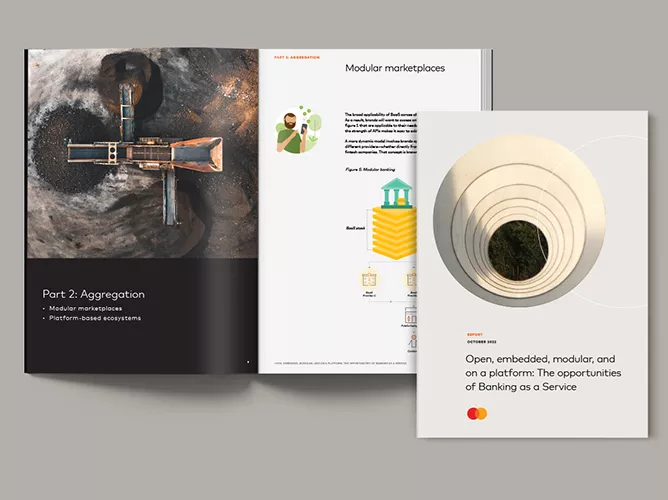A comparison of open banking in the Netherlands, France, Spain and Switzerland.
Foreword
There is a reason this report is not titled Four takes on European open banking. Describing open banking in that way could misleadingly imply that open banking in Europe is largely monolithic and that the countries just add some regional flavour.
The actual title of Four European takes on open banking does not mean to deny the many commonalities across European countries’ approaches, but it does aim to highlight how the differences tend to overshadow any overarching philosophy.
We note in the introduction how the idiosyncrasies of different countries’ approaches exist regardless of any formal adherence to European Union guidance or not. Perhaps most telling in that regard is how the phrase “open banking” is nowhere to be found in the EU’s revised Payment Services Directive (PSD2), although that is set to change based on the proposals for a new Payment Services Regulation (PSR) and an accompanying PSD3.
In our overview of open banking in Europe, we look at what open banking really means in Europe relative to the rest of the world and caveat that its evolution into open finance is more than just about expanded scope. We then justify our choice to focus on the Netherlands, France, Spain and Switzerland instead of on Europe’s top-four open banking performers of Sweden, Denmark, Norway and the UK.
The ability to put the top-four performers on a pedestal above other European countries does not extend to being able to rank the Netherlands, France, Spain and Switzerland against each other. The executive summary of findings notes how the countries jostle back and forth across various measures, but the differences are too myriad to allow any objective scoring.
Chapters then consider each country in detail. For example, we look at the effect of the Netherlands' unique payments backdrop on perceptions of need, consider how France's standardisation in one area may bode well for powerful market-wide coordination, note how some earlier perceptions of sluggishness in Spain are belied by tremendous momentum, and ponder Switzerland's delicate juggling act between efficiency and missing out. Our findings are based on Mastercard surveys across the four countries, which we then supplement with other sources.1
We conclude by noting how a common open banking agenda paradoxically depends on an appreciation of the very differences that underlie that unity.
We hope you enjoy the report.
In 1943, Jean Monnet, a French civil servant and early proponent of European unification, called for a common economic unity.2 Eighty years of macroeconomic progress later, Monnet would likely be happy to see his vision extend beyond central bank monetary policy into retail and commercial banks sharing permissioned data via open banking.
Yet European history shows that hard-fought unity often has little to do with practical similarity. Approaches to open banking across European nations are bound to have regional commonalities. A choice comparison of the Netherlands, France, Spain and Switzerland uncovers many differences as well.
The most obvious difference is perhaps not the most informative. The Netherlands, France and Spain are members of the European Union; Switzerland is not. Its “market led” approach to open banking ostensibly sets it apart from the EU’s “regulation led” approach under the revised Payment Services Directive (PSD2).
Such a separation is simplistic. Firstly, PSD2 is a directive rather than a regulation, so EU countries must attain the same results while their means may differ in accordance with how PSD2 is transposed into national laws. The same applies to the proposal for PSD3, although the requirements of the proposed Payment Services Regulation (PSR) will not allow such local variation.
Secondly, “market led” versus “regulation led” is hardly the dichotomy it appears to be. EU membership does not keep the Netherlands, France and Spain from having distinct markets of their own any more than it keeps Switzerland distinct.
A recent study of several European markets predicts open banking use to double between 2022 and 2027.3 The projections are based on current trajectories, but they are not foreordained. High levels of digitalisation can give momentum to open banking, or they can be a hindrance if emerging needs are not palpable or urgent. Consumer proclivities can also be as influential as technological capabilities.
The continued growth of open banking is largely inevitable. But the speed of that growth in individual countries depends on how well open banking is tailored to specific market considerations.
Open banking’s origins lie in permissioned web scraping to access customer account data. The term gained currency in 2017 when the UK’s Competition and Markets Authority (CMA) launched the Open Banking Implementation Entity (OBIE). Formal clout across the EU came in September 2019 with the entering into force of PSD2, which promoted the use of secure application programming interfaces (APIs) instead of web scraping.
The association of PSD2 with open banking was sealed in January 2018 with the transposition of PSD2 into UK law as part of the OBIE’s activities. Yet the association is not inherent; the phrase “open banking” is notably absent from PSD2.
True to its name, PSD2 is a payments directive. It replaces the first Payment Services Directive from 2007 and specifically introduces payment initiation service providers (PISPs) as extensions of payment service providers to facilitate e-commerce credit transfers. At the same time, the directive allows payment service providers to operate as account information service providers (AISPs) that receive customer-permissioned access to payment account data but do not initiate payments.
In contrast to payment initiation services being part of open banking in the EU from the outset, open banking elsewhere largely leads with account information services and then often follows with payment initiation services. The inversion makes sense when the most basic definition of open banking is the sharing of customer-permissioned account data.
The proposals for PSR and PSD3 provide some clarity. While both still begin with the word “payment”, one of their shared objectives is to “improve the competitiveness of open banking services.” The approach makes sense when the business models for open banking sit mostly within payments and other transactions. Three times as many consumers worldwide picked making a payment over receiving personalised financial insights as a beneficial use case of open banking in the Mastercard 2022 New Payments Index.4
More recently, open banking is moving into open finance. The EU’s proposed Financial Data Access (FIDA) regulation specifically goes beyond the payments account data of open banking to “establish a framework governing access to and use of customer data in finance”. Just as importantly, it notes the need for financial institutions across the EU to be “governed by the same legal framework and the same technical standards”.
The importance of standards is well understood. The 2021 Open Banking Readiness Index scores ten European countries across five categories of readiness. The Nordic countries of Sweden, Denmark and Norway take category one for reasons including their pan-Nordic digital IDs and know-your-customer (KYC) solutions. The UK takes category two by itself on account of its position at the forefront of open banking with its own API standard and progress in open finance.
Sweden, Denmark, Norway and the UK represent natural benchmarks for progress in open banking. This report alternatively focuses on the promising evolution of open banking in another set of four countries: the Netherlands, France, Spain and Switzerland. Their selection is based on how distinctions between their markets exemplify different evolutions of that promise.
Four different takes on open banking might be expected to allow four different rankings based on progress. But the high variation between the countries’ backdrops makes that challenging.
The need for a basic API standard gives France an initial edge with its consolidation around the STET API provided by the country’s Systèmes technologiques d'échange et de traitement (STET) clearing house for retail payments. The other three countries have no comparable national standard: Spain mostly relies on a single private aggregator, Switzerland is juggling competing standards among industry consortiums, and uptake of the Netherlands’ National Implementation Support Platform (NISP-NL) standard has been lacklustre.
On the non-retail payments side, the Dutch Payments Association’s Instant Payments service handles almost all payments, but full compatibility with the Single European Payments Area (SEPA) instant credit transfer (SCT Inst) standard is still wanting. Spain’s Iberapay leads SCT Inst usage, followed by France and then the Netherlands. Switzerland’s share is negligible for now, but the Swiss Infrastructure and Exchange (SIX) group’s launch of the Swiss Interbank Clearing (SIC) 5 platform in 2024 will automatically comply with the ISO 20022 messaging standards being applied to SCT Inst payments.
The European Mobile Payment Systems Association (EMPSA) includes a domestic provider from each market except for France. The Netherlands’ provider dwarfs the other two in the quantity and value of e-commerce payments, although the far smaller e-commerce share enjoyed by Switzerland’s provider includes a burgeoning in-store footprint via QR-code payments. Meanwhile, Spain’s provider still largely relies on its origins in peer-to-peer transfers rather than e-commerce, but it stands out from the others through its SCT Inst compliance.
Beyond API standards and account-to-account payments, the variation in capabilities and readiness across the four countries is perhaps best encapsulated by their states of digitalisation. On the one hand, the Netherlands and Switzerland seem to outperform France and Spain in their states of digital evolution and attitudes to digital trust.5 But Spain then appears to soar ahead in terms of actual digital engagement.6 Spain also has the highest number of “passported-in” third-party providers (TPPs) across the European Economic Area (EEA) and the UK.7
A closer look at each country is necessary to provide the context for these differences under what are otherwise ostensibly similar European regional conditions.
The Netherlands ranks first in attitudes to digital trust across 42 economies worldwide in the 2020 Digital Intelligence Index (DII). The ranking is based on how citizens feel about their experiences with digitalisation and bodes well for open banking. Only 17% of Dutch consumers have big concerns with sharing financial data with third parties, and 25% have no concerns at all.
Yet open banking is evolving in the Netherlands against a unique payments backdrop. The Instant Payments initiative by the Dutch Payments Association is now the default method for credit transfers in the Netherlands and covers almost all Dutch payment accounts.8 The plan is for complete compatibility with the European SEPA instant credit transfer (SCT Inst) standard. For now, Dutch use of Instant Payments dwarfs the use of SCT Inst in the other 35 countries in the SEPA area, which amounts to only 13% of all euro credit transfers in the third quarter of 2022.9
In addition to the Instant Payments infrastructure, a consortium of major Dutch banks partner around iDEAL, a real-time e-payments solution for retail. The solution, which enables account-to-account payments, is used by 95% of consumers and has a 68% share in preference for online payments.10 Largely because of iDEAL, e-payment solutions took an 83% share of the number and value of online payments in the Netherlands in 2022; the average across the rest of the Euro area was 26% in number and 24% in value.11
An 84% consumer satisfaction rate with iDEAL online contrasts with an overwhelming preference for payment cards offline. Card payments in the Netherlands take the second highest shares across the eurozone in number and value of transactions at 67% and 70%; only Finland is higher at 70% and 75%.12 When consumers cited reasons for online payment preferences, “best user experience” was cited by 31% of credit card opters versus only 25% of iDEAL opters. The 84% consumer satisfaction rate with iDEAL also does not carry over to satisfaction among business users at 50%.
Yet even if the iDEAL user experience occasionally falls short of its name, it goes back almost two decades to 2005 and is now ingrained. Comfort paying directly from a bank account is at 72% in the Netherlands, while it hovers in the 50s in France, Switzerland and Spain.13 As iDEAL’s market broadens, its appeal beyond its Dutch pedigree remains to be seen.
Dutch account-to-account comfort is notable in the context of the 2021 Open Banking Readiness Index, which notes open banking in the EU to be a “vehicle for digital transformation of domestic payment ecosystems” in France and Spain. Since the Netherlands has already undergone that transformation, open banking might be expected to be a shoo-in that thrives on the natural synergy between real-time payments and open banking.
The reality is less simple. One analysis projects Dutch usage of open banking to grow from 7% of adults in 2021 to 29% in 2027, but that pales in comparison to its projections for France and Spain from 8.5% and 9.8% to 36% and 41% over the same period.14 The irony is that Sweden at 47% in 2027 is predicted to outperform them all for reasons familiar to the Netherlands: strong digital penetration, and high mobile banking and payment adoption. Any such projections are at best informed guesses and necessarily subjective based on different weighting of criteria, but the underlying evidence is informative.
A telling example is the struggle by the Dutch Payments Association to achieve standardisation across the APIs that provide open banking connections. Many other European countries have also struggled in this regard, but the lacklustre response to the National Implementation Support Platform (NISP-NL) for PSD2 stands in contrast to the success with Instant Payments.
Financial institutions claim to see limited monetisation opportunities in open banking when payments are efficient and payment account aggregation services are commonplace. That sentiment appears to be shared by businesses and consumers, and some of it can likely be attributed to an incomplete understanding of open banking as a new and evolving concept. Still, only 20% of businesses profess a likelihood to use open banking services. Consumers poll slightly better with an average of 31% showing some likelihood across a selection of services, but that percentage plummets to 3% if fees are involved.
Still, open banking is more than PSD2’s narrow focus on payment accounts. Indifference to NISP-NL means the Dutch market is now largely following the Berlin Group’s pan-European Open Finance API framework. The shared functionality that underpins open finance requires a level of coordination that Dutch banks already enjoy through the Dutch Payments Association and iDEAL.
On the business side, invoice reconciliation & payment is the most in-demand fee-based open banking service in the Netherlands. Accountancy software currently only serves 36% of the Dutch market, and traditional invoices persist particularly among small businesses. Recent Dutch initiatives around request-to-pay messaging services, including SEPA Request to Pay (SRTP), can thrive as an alternative to invoices when coupled with open banking push payments.
Meanwhile, 90% of Dutch consumers are open to trying a new tool to manage their finances, and the most in-demand use for open banking is the ability to manage all subscriptions in one app. Buy Now, Pay Later (BNPL), another largely untapped area in the Netherlands, will benefit from instant credit scoring through open banking. And iDIN, a digital identity service from the consortium behind iDEAL,15 may bring to the Netherlands some of the benefits from digital IDs that helped put Sweden, Denmark and Norway at the top of the 2021 Open Banking Readiness Index.
The projected slower growth of open banking in the Netherlands relative to some other European markets is not necessarily misguided, but it is perhaps misleading. Rather than a statement of what will likely happen, it is a warning of what could happen if the Netherlands fails to extend beyond basic payments and domestic networks.
Much like a quintessentially soft French cheese or a characteristically firm Dutch cheese, French open banking has a different texture from its Dutch counterpart.
France comes in at 25 and 31 in the DII rankings for state of digital evolution and attitudes to digital trust, where the Netherlands scores seventh and first. And 62% of French consumers say they would not give access to their banking data to access open banking services, while almost the same percentage of Dutch consumers at 57% say they would give access under the right conditions. The most popular uses for open banking in France are account-to-account credit transfers, used by 37% of open banking adopters and of interest to a further 37%, and e-commerce payments, used by 29% and of interest to 42%. Neither are priorities in the Netherlands.
In short, when 72% of consumers in the Netherlands are comfortable paying directly from a bank account versus only 59% of consumers in France, it comes down to Dutch habit versus French desire.16
On the infrastructure side, the adoption of the French open banking STET API standard contrasts with the lacklustre adoption by banks of the Dutch NISP-NL API standard. In addition, the 52% (136 of 262) share of SCT Inst participants out of all SCT participant institutions in France is higher than in the Netherlands at 41% (16 of 39).17 But those percentages do not fully account for the near ubiquitous, albeit domestic, Instant Payments scheme in the Netherlands. Still, a likely SCT Inst mandate will dramatically boost real-time payments across the EU,18 and France will be no exception.
On the retail side, e-payment solutions in France take 22% and 19% of the shares in number and value of online payments. Those percentages are under the Euro-area averages of 26% and 24%, and they are significantly under the Dutch share of 84% in both.19 Superficially, the lack of an e-payments provider with a comparable market share to iDEAL in the Netherlands, suggests the French market still has a way to go. There is no provider from France among the 13 members of the European Mobile Payment Systems Association (EMPSA), which aims to foster cross-border interoperability between e-payment solutions and counts iDEAL as a member along with broadly similar Spanish provider Bizum and Swiss provider TWINT.
Yet France’s STET API presents an opportunity. An established API standard is a boon to countries looking to open banking as a “vehicle for digital transformation of domestic payment ecosystems”. In the same way the Dutch Instant Payments scheme needs to accommodate SEPA Inst standards, France’s STET API standard needs to conform to emerging pan-European standards, such as the Berlin Group’s open finance API framework. In tandem with SCT Inst, France now has the opportunity to develop a solution that goes beyond open banking into all that open finance has to offer.
Open finance in combination with real-time payments can cover efficient transactions from multiple account types with a shared interface across all banks that goes beyond being simply open banking with a broader scope. Regardless of any domestic versus pan-European considerations, the difference between the Netherlands and France largely comes down to the sides they fall on: the Netherlands takes real-time payments for granted outside of weaker open banking connectivity; France takes open banking connectivity for granted outside of a weaker—for now—real-time payments infrastructure.
One particularly relevant extension of payments for France is in bill payments, which are used by 50% of consumers as the most common application of mobile and online banking. Although over 90% of French consumers are satisfied with current bill payment solutions, the satisfaction only extends as far as individual payments since there is currently no single entryway.
A unified approach to bill presentment via open finance appeals to the 56% of consumers and 46% of businesses looking for convenient solutions, such as the ability to track bills and view them all in one place. And in terms of an e-commerce solution, France may be well served by the European Payments Council’s plans to include the ability to request in-store or online payments via SEPA Request to Pay (SRTP) as part of SCT Inst in a manner similar to Thailand’s PromptPay.
At 8.5% open banking use with a projected growth to 36% by 2027, France currently sits above the Netherlands at 7% and 29%, according to a 2021 analysis.20 France’s ranking might seem high when only 4% of consumers have heard of open banking and only 25% state any interest once the concept is explained. Yet France’s success with the STET API standard means connectivity can be taken for granted. The questions now are how far banks will make use of this connectivity as a strategic asset and whether broader European initiatives can provide the necessary support.
Currently sitting above the Netherlands and France in the 2021 analysis is Spain at 9.8% open banking use with a projected growth to 41% by 2027.
The Spanish rankings for the state of digital evolution and attitudes to digital trust in the DII largely parallel France: 30 for Spain in both categories; 25 and 31 for France. Both rank far below the Netherlands at seven and one and Switzerland at six and eight.
Yet similarities can be deceptive. The Spanish language shares a lexical similarity of around 75% with French, but the overlap helps less with mutual intelligibility than might be expected. A comparison of the Spanish and French open banking environments paints an analogous picture.
For example, the DII rankings are jumbled when looking at digital trust in terms of user behaviour and of people’s reactions to and interactions with digital environments and experiences. Spain is not particularly high at 27, but it outranks the Netherlands at 28, France at 32 and Switzerland at the bottom of the entire list at 42.
The rankings of the 2022 Connected Economy Index (CEI), which accords a percentage score based on engagement in certain digital activities across a select group of countries, support the DII. The CEI relies on different inputs from the DII and is not directly comparable, but it similarly ranks Spain at 32.4% above the Netherlands at 27.6% and France at 23.9%.21 Of the 11 economies in the CEI, only Singapore outscored Spain at 35.4%.
No wonder that interest in open banking among Spanish consumers is 60% versus 57% in France and 50% in the Netherlands, according to rankings in a 2021 analysis.22 The same analysis also puts Spain’s open banking growth potential above France and the Netherlands.
The burgeoning interest is not solely domestic either. Spain has the highest number of “passported-in” third-party providers (TPPs) at 129 across the European Economic Area and the UK at the end of 2022.23 Although the number of Spain’s domestic TPPs at 13 lags France at 28 and the Netherlands at 29, TPPs registered outside of Spain clearly see potential in the Spanish market.
Still, the lower number of domestic TPPs, under half of France and the Netherlands, accords with a slower start to open banking in Spain. It was one of the last EU members to ratify PSD2 in November 2018, over nine months after the directive came into force in January 2018.24 And unlike France’s STET, Spain does not have an official open banking API standard. Most banks outsource API access to a single private aggregator that has become a de facto standard with limited market competition.
Spain’s momentum seems remarkable given the context, but it did not emerge out of a void. Despite the lack of an official API standard, the private de facto standard follows the Berlin Group standards around open finance. That puts most Spanish banks on the same page even for more advanced open banking services.
Meanwhile, Spain has busied itself supporting and defining other international and national standards. Back in November 2017, Spain’s national payment system Iberpay became the first domestic interbank infrastructure to incorporate SCT Inst. As of 13 January 2023, 79% of Spain’s SEPA participants are also SCT Inst participants. That compares with 52% in France, 41% in the Netherlands, and next to nothing in Switzerland.25 Just as significantly, the Spanish participants cover 98% of the Spanish payment market, and SCT Inst payments represent 48% of all credit transfers in the Spanish payment system.26
Then in July 2018, four months before ratifying PSD2, Spain released a draft bill for the digital transformation of its financial system.27 The law was approved in November 2020 when Spain joined the Netherlands and Switzerland as one of a handful of European countries with a regulatory sandbox for fintech innovation.
In addition, Spain’s account-to-account payments service Bizum follows SCT Inst standards, is backed by the central bank, and is supported by almost all Spanish banks. In 2022, Bizum joined iDEAL as a member of the European Mobile Payment Systems Association. Yet unlike iDEAL, Bizum’s origins are in peer-to-peer transfers, which account for most of its use. It has some penetration in e-commerce and has recently started going in-store with QR codes,28 but the 20% share in value of e-payment solutions for online payments in Spain is closer to France at 19% than the Netherlands at 83%.29 These percentages parallel the share in value of cards online: Spain at 58% is the second highest across the EU and just above France at 57%; the Netherlands is lowest at 11%.30
From API connectivity and a fintech sandbox to a real-time payment infrastructure and account-to-account payments, Spain has a lot of momentum. It might not yet be able to take connectivity for granted like France, but any measure of success in pulling the different pieces together under one cohesive open banking vision bodes well for when connectivity is assured.
Outside of any “market-led” versus “regulation-led” distinction, open banking in Switzerland appears more similar at first glance to open banking in the Netherlands than in France or Spain. But look a little closer, and their foundations start to appear as inverted as Swiss mountains versus Dutch lowlands.
Across the 42 countries in the DII, Switzerland and the Netherlands rank three and four in the state of digital evolution, two and four in the digital trust environment, eight and one in attitudes to digital trust, and five and fourteen in digital trust experiences. By contrast, France’s and Spain’s rankings range from 19 to 31.
Yet in one category Switzerland is 42 of 42: digital trust in terms of user behaviour and people’s reactions to and interactions with digital environments and experiences. The Netherlands fares a little better at 38 but still ranks lower than France and Spain at 32 and 27. This discrepancy is one reason why open banking momentum in Switzerland, and to a lesser extent the Netherlands, currently appears slower than France and Spain.
The 2020 DII data comes from 2019 before Covid-19 caused behavioural shifts that pushed people more online, but Switzerland was no more susceptible to Covid than anywhere else. What is different is its market backdrop.
The Swiss, unlike the Dutch, have an affinity for cash. With a 43% share of transactions in 2020, cash use is roughly equivalent to the combined share of credit and debit cards.31 In a typical month, 75% of consumers use cash. Switzerland has more ATMs per person than the European single market average of 1,800 people per ATM, while the Netherlands has dramatically less at 21,000 people per ATM.32 Even when banks are cutting back on ATM locations, a Swiss fintech startup has filled the void by letting retailers function as ATMs without the need for a purchase and with pre-confirmed availability of funds.33
It is unsurprising then that only 59% of Swiss consumers would like to make a payment directly from their bank account without having to input credentials, versus 61%, 65% and 74% in France, the Netherlands and Spain.34 Still, cash does not work online in Switzerland any better than it does anywhere else in the world. It is now following a familiar decline: cash’s 43% share of transactions remains high by European standards but pales in comparison to its 70% share as recently as 2017; only one in three youths and young adults cite cash as their preferred payment method; and debit cards overtook cash in the total value of transactions in 2020, albeit not in the number of transactions.35
In a country where cash still reigns for now, it might seem surprising that the most desired use of open banking is expanded management of all payment cards at 57%. But the highly banked nature of Swiss consumers shows continued cash use to be a preference rather than a predicament. Swiss consumers have three payment cards versus an EU average of 2.4 and outnumber Spain at 2.7, the Netherlands at 2.5 and France at 1.8.36 Switzerland also ties for sixth place out of over seventy countries based on how well market conditions equip cardholders to make payments, according to Mastercard’s Card Payment Index. Of the other three countries, only Spain cracks the top-10 with a tenth-place tie.
With 42% of the value of transactions, worth 9 billion Swiss francs in 2022, Payment cards dominate e-commerce in Switzerland. Credit transfers follow with 16%, which is more than the 11.4% contributed by debit cards alone. TWINT, an account-to-account payments provider owned by a consortium of Swiss banks, only takes 7.4%.37 Still, it does claim over half the Swiss population in its 5 million users as of February 2023 with similar acceptance levels in Swiss physical stores as in Swiss online stores.38
The popularity of credit transfers accounts for the relative unpopularity of direct debit in Switzerland. Its negligible 2% share of the total number of payments in 2020 contrasts with a 16% share in the Netherlands and 20% shares in France and Spain.39 QR bills replaced traditional Swiss payment slips in 2020, although their use will likely soon be eclipsed by e-bills that have grown from an 8% share in 2015 to 25% in 2020.40 In a manner already embracing open banking principles, albeit still pending support from a real-time payments infrastructure, e-bills appear on users’ banking interfaces and offer one one-click push payments that give the payee control.
The Swiss Infrastructure and Exchange (SIX) group, which operates the Swiss financial market infrastructure, specifically highlights the potential of open banking in its plan for an intelligent billing platform that offers an overview of all bills. The aim is to go beyond billing by using customer-permissioned data to include services such as financial management, lending, insurance and even invoice factoring.41 The vision is timely when the most desired services of banking apps noted by Swiss consumers are bill payments at 56% and access to bills at 49%.
A real-time payments infrastructure is now also on the Swiss horizon. The Swiss Interbank Clearing (SIC) platform, which sits within the SIX group, plans to launch its SIC-5 platform for small-value instant payments in 2024.42 The platform will automatically comply with the ISO 20022 messaging standards being applied to SCT Inst payments in November 2023.
The launch of SIC-5 is late when compared with some European peers but is reflective of market demand as open banking becomes inextricably linked with real-time payments. By comparison, the SIC-4 platform for the real-time gross settlement (RTGS) of large-value payments adopted ISO 20022 in 2016, far in advance of the March 2023 date set by the European Central Bank for RTGS.43 In a sense, Switzerland is just efficiently handling SCT Inst and ISO 20022 all in one go from the outset.
Most demand for open banking in Switzerland currently comes from corporate and wealth clients. In the absence of any national API standard, the OpenWealth Association is developing an open API standard for wealth management as a complement to the “Common API” specifications for banking and insurance being developed by the Swiss Fintech Innovations industry association. The Common API initiative overlaps considerably with a parallel “Swiss NextGen API” initiative, but only one basic API standard is likely to prevail. Most open banking services focus on corporate clients and cluster around integrated accounting and financial management, transaction reconciliation, and automated salary payments.
On the individual consumer level, close private relationships with banks could make Swiss consumers less willing to share their data. Three quarters of consumers are satisfied with their primary bank, 48% have had a banking relationship since childhood, 56% have never changed their primary bank, and 94% do not plan to change banks. Still, that 6% planning to change banks increases to 49% for access to at least one open banking service if engagement with a new bank does not mean shifting primary accounts. A lack of palpable demand does not negate the existence of latent demand.
Switzerland’s “market led” approach to open banking might not differ in its ultimate objectives from a “regulation led” approach, but an efficient waiting game risks slipping into a game of catch-up. Swiss regulators are not under the same EU obligations as Dutch, French and Spanish regulators to corral a less willing market. The question is whether they might want to start doing so anyway. The Swiss Federal Council has already indicated a need for more progress and commitment.44
Lumping countries like the Netherlands, France, Spain and Switzerland together as part of one “European” open banking entity can sometimes be useful for overarching comparisons with other regions. Pan-European efforts, such as those by the Berlin Group, legitimise such a perspective.
Yet other standards are emerging. For example, the North American FDX (Financial Data Exchange) API standard accords well with the regulated UK and Australian API standards.45 It remains to be seen whether the new proposals in Europe will prompt convergence around a European standard or whether an international standard may even emerge. It is also unclear how much of a role the banking sector will play in its evolution relative to the broader technology sector.
The alternative to lumping is splitting. The analyses presented in this report focus on the important nuances of four individual European markets that give the Netherlands, France, Spain and Switzerland such distinct open banking agendas.
The risk with these analyses comes from oversimplifying matters through glib recommendations: the Netherlands should avoid complacency, France should coordinate around the established core, Spain should consolidate momentum, and Switzerland should be mindful of excessive market reliance. Such recommendations are neat but misleading. The advice matters to all four countries; the degrees of importance just vary based on country-specific considerations.
Open banking is still new. It is making connections in Europe in 2023 where Jean Monnet was deftly making them back in 1943. The connections today are different, but a comparable level of deftness in connectivity and protection is needed to help countries meet a common agenda while catering to their specific markets.
Request a demo to learn more.
2 “Une unité économique commune.” Phrase used by Jean Monnet in his speech to the French National Liberation Committee, 5 August 1943.
3 “European open banking forecast, 2022 to 2027.” Forrester, 21 November 2022.
4 Mastercard New Payments Index. Research conducted by Mastercard Global Foresights, Insights & Analytics and The Harris Poll from March 21 to April 21, 2022. Online interviews with nationally representative samples of 35,040 global adults across five regions (North America, 2,001; Latin America & Caribbean, 6,004; Europe, 11,522; Eastern Europe, Middle East & Africa, 8,509; Asia Pacific 7,004).
5 “Digital in the time of Covid: Trust in the digital economy and its evolution across 90 economies as the planet paused for a pandemic.” The Fletcher School at Tufts University (supported by Mastercard). December 2020.
6 “Q4 2022 Konsentus third party provider open banking tracker.” Konsentus, 18 January 2023.
7 “Benchmarking the World’s Digital Transformation: The ConnectedEconomy™ Index, Q1 2022.” Pymnts.com & Stripe, April 2022.
8 “Are Instant Payments becoming the new normal in the Netherlands?” Interview with Piet Mallekoote (Dutch Payments Association), The Paypers, 25 June 2019.
9 “SCT Inst scheme – where are we now and where are we heading?” European Payments Council, 28 November 2022.
10 Other options in order of preference: credit card, debit card, Klarna or Afterpay, PayPal, direct debit, cash on delivery, invoice, online payment with Apple/Google/Samsung Pay, payment request (e.g. Tikkie), other, Acceptgiro collection form, gift/prepaid card.
11 “Study on the payment attitudes of consumers in the euro area (SPACE) – 2022.” European Central Bank, December 2022.
12 “Study on the payment attitudes of consumers in the euro area (SPACE) – 2022.” European Central Bank, December 2022.
13 Mastercard New Payments Index. Research conducted by Mastercard Global Foresights, Insights & Analytics and The Harris Poll from March 21 to April 21, 2022.
14 “European open banking forecast, 2022 to 2027.” Forrester, 21 November 2022.
15 “iDEAL 2.0 – A new chapter with Daniel van Delft.” The Paypers, 20 July 2021.
16 Mastercard New Payments Index. Research conducted by Mastercard Global Foresights, Insights & Analytics and The Harris Poll from March 21 to April 21, 2022.
17 “Overview SEPA scheme participants: Status of 13 January 2023.” European Payments Council, 13 January 2023.
18 “Proposal for a regulation of the European parliament and of the council amending Regulations (EU) No 260/2012 and (EU) 2021/1230 as regards instant credit transfers in euro.” European Commission, 26 October 2022.
19 “Study on the payment attitudes of consumers in the euro area (SPACE) – 2022.” European Central Bank, December 2022.
20 “European open banking forecast, 2022 to 2027.” Forrester, 21 November 2022.
21 “Benchmarking the World’s Digital Transformation: The ConnectedEconomy™ Index, Q1 2022.” Pymnts.com & Stripe, April 2022.
22 “European open banking forecast, 2022 to 2027.” Forrester, 21 November 2022.
23 “Q4 2022 Konsentus third party provider open banking tracker.” Konsentus, 18 January 2023.
24 “16036 Real Decreto-ley 19/2018, de 23 de noviembre, de servicios de pago y otras medidas urgentes en materia financiera.” Boletín oficial del estado #284 (Disposiciones generales, Jefatura del estado), 24 November 2018.
25 “Overview SEPA scheme participants: Status of 13 January 2023.” European Payments Council, 13 January 2023.
26 “About Iberpay.” Iberpay, 2022.
27 “Anteproyecto de ley de medidas para la transformación digital del sistema financiero.” Government of Spain, 10 July 2018.
28 “Spain’s Bizum banks on point of sale expansion to drive growth.” Pymnts, 1 December 2022.
29 “Study on the payment attitudes of consumers in the euro area (SPACE) – 2022.” European Central Bank, December 2022.
30 “Study on the payment attitudes of consumers in the euro area (SPACE) – 2022.” European Central Bank, December 2022.
31 “Popular, but under pressure – cash in the digital age,” speech by Martin Schlegel (SNB). Swiss National Bank, 29 November 2022.
32 “Banking in Europe: EBF facts & figures 2022.” European Banking Federation, 2022.
33 “Cash withdrawal with the TWINT app thanks to Sonect.” Sonect, 10 May 2021.
34 Mastercard New Payments Index. Research conducted by Mastercard Global Foresights, Insights & Analytics and The Harris Poll from March 21 to April 21, 2022.
35 “Popular, but under pressure – cash in the digital age,” speech by Martin Schlegel (SNB). Swiss National Bank, 29 November 2022.
36 “Switzerland market assessment.” Mastercard (based on RBR global payments card data and forecasts), May 2022.
37 “Switzerland consumer insights 2022.” Mastercard (based on data from GlobalData’s 2022 Financial Services Consumer Survey and 2022 Quarterly Consumer Surveys), 2022.
38 “TWINT reaches 5 million users and 386 million annual transactions.” TWINT, 21 February 2023.
39 “Switzerland market assessment.” Mastercard (based on RBR global payments card data and forecasts), May 2022.
40 “Future of Billing.” SIX, 2020.
41 “Future of Billing.” SIX, 2020.
42 “Digitalisation trends in the Swiss payment landscape: An interview with Dieter Goerdten and Michael Montoya.” European Payments Council, 7 October 2021.
43 “Eurosystem reschedules start of renewed wholesale payment system.” European Central Bank, 20 October 2022.
44 “Federal Council wishes to promote open finance.” The Federal Council (Swiss Confederation), 16 December 2022.
45 “Podcast 405: Don Cardinal of Financial Data Exchange.” Fintech Nexus, 13 January 2023.

























